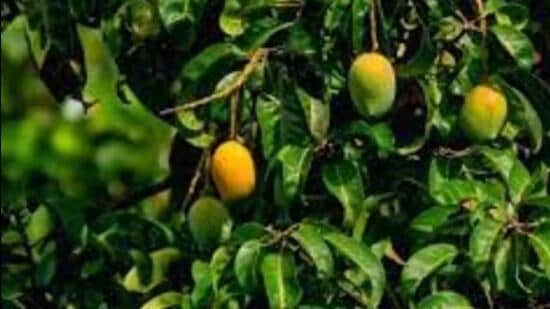A season of plenty: Kangra bucks the national trend with surge in mango yield
Mango production in Kangra is expected to exceed 23,000 metric tonne this year, up from 16,800 MT in 2023
Amid reports of low mango yields across various states in the country, Kangra’s produce of the “king of fruits” is expected to be higher this year.

According to estimates from the horticulture department, mango production is expected to exceed 23,000 metric tonne this year, up from 2023’s 16,800 metric tonne. The production in 2022 was around 20,166 metric tonnes.
Kangra deputy director (Horticulture) Dr Kamal Sheel Negi said the overall mango production in India is lower this year due to weather related reasons. “That is why the price of mangoes is higher. But the produce here is good and we expect that it will be above 23,000 metric tonnes,” he said.
Mango is cultivated in the lower belt of Himachal, especially Kangra district where it is a main crop and grown on around 21,600 hectares.
Officials attribute this increase to favourable temperature and weather conditions during the flowering period, in contrast to last year when rainfall adversely affected it. The harvesting season for mangoes lasts till July, with some late season varieties being harvested in August as well.
Smaller bites
However, due to the less rainfall in the last few months and recent heatwave conditions, the size of the mangoes is smaller this year, which horticulture department officials say might be addressed to some extent with increased rainfall activity in July.
Last year, inclement weather negatively impacted the mango yield in Kangra. According to experts, mango flowering typically occurs from the first to the third week of March, with fruit setting taking place in the last week of March.
New options to choose from
Negi said the state has imported new varieties in recent years and has developed a progeny-cum-demonstration orchard (PCDO), adding, “These are high density plantations, which will increase the production.”
The orchard has begun producing sample fruits three years after planting, meeting the expectations of horticulture experts. The hybrid mango varieties—Pusa Arunima, Pusa Lalima, Pusa Surya, Pusa Shreshtha, Malika, and Chausa—are cultivated using high-density plantation (HDP) techniques. These varieties start bearing fruit in just three years, compared to the six to seven years required for traditional varieties.
Meanwhile, the department has also established a demonstration orchard of such hybrid varieties in the farms of three private farmers at Indora in Kangra district.
In an HDP system, 1,111 plants of these hybrid varieties can be grown on one hectare, whereas only 100 plants of traditional varieties can be accommodated in the same area. Besides, growers can practise intercropping to cultivate seasonal vegetables within their orchards, enhancing productivity and profitability.






